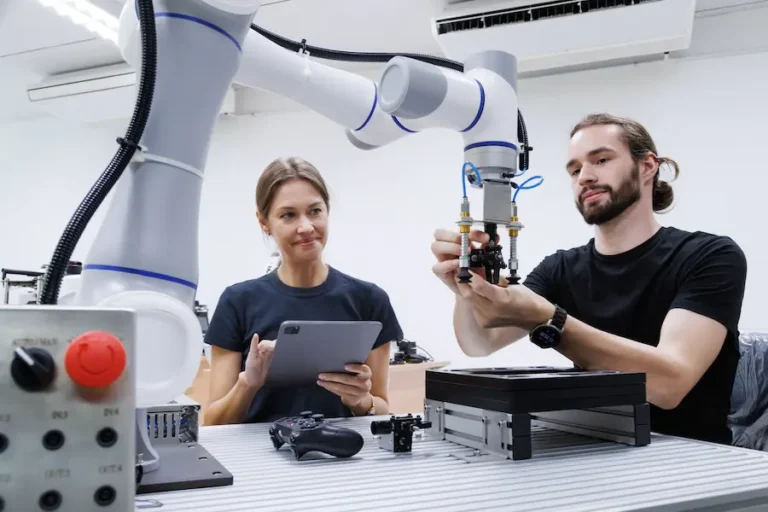Some software companies capitalise their R&D, on their accountant’s advice. What this ends up doing is spreading the expense over several years and making the balance sheet look better.
Whether software is really worth anything beyond the sales which it generates (or fails to generate) is a discussion for another day, but it’s important for us to know this answer: does capital expenditure count towards tax credits?
Capex is a tricky topic in the R&D Tax Credits manual. The answer sounds like a classic case of “no, but yes, but no, but yes…”
Have a look for yourself.
If your company and the project both meet the necessary conditions, then you can claim tax relief on revenue expenditure (generally, this means costs incurred in the day-to-day running of the business – not capital expenditure on assets) in the areas outlined below, if all necessary conditions are met.
Note the “generally”, bolded by yours truly, which is the first hint that not all is so simple in this exciting world of Capex and tax credits.
A further section on the same page explains:
Although R&D Relief is only available for ‘revenue expenditure’ (generally, day-to-day running costs, as opposed to capital expenditure), if you are involved in R&D and you spend money on capital assets, you may be able to claim R&D capital allowances.
Let’s go down the rabbit hole! (also known affectionately as “The CIRD”, pronounced “Curd” by R&D Tax Credit practitioners and HMRC inspectors alike).
We start our digging here:
To be eligible as qualifying R&D expenditure, expenditure must be allowable as a deduction in calculating the profits of the trade. Capital expenditure is therefore excluded; it may however qualify for R&D allowances (see CA60000 onwards). The accounts treatment (involving either recognition of an asset on the balance sheet or the write off of expenditure immediately to the profit and loss account) is not conclusive of whether the expenditure is revenue or capital for tax purposes. Expenditure that is revenue expenditure for tax purposes but is capitalised for accounting purposes is dealt with at CIRD81450.
Yes, but no, but yes. The money sentence is in bold, and seems to be claiming, without much doubt about it, that expenditure must be deducted from the profit in the tax calculations in order to be eligible for R&D Tax Credits. However, the points that follow it help confuse the matter. To get a final answer, we need to go one level deeper, to the fearsome CIRD81450. The beginning seems heartening:
The statute provides that, to be eligible for relief, expenditure within the qualifying categories must have been allowable as a deduction in computing the profit of the trade for which the R&D is relevant.
But then, as usual, things get more complex:
So long as:
– expenditure is recognised either as a deduction in computing the profit or as an intangible asset in accounts beginning on or after 1 January 2005, and
– the expenditure is not prevented from being an allowable deduction in the calculation of profit for that period (for example because it is pre-trading expenditure for a company within the large company scheme, or because it is capital expenditure for tax purposes), and
– the expenditure is incurred during the accounting period,
then FA04/S53 allows expenditure to be deducted in computing the profit when it is incurred irrespective of whether it appears as a deduction in the profit and loss account.
Infuriating, isn’t it?
Accounts vs Tax
An important distinction which HMRC draws is between the P&L that’s presented in the company accounts, and the tax calculations submitted to HMRC (also known as CT600). The key take-away from all this HMRC text is that even if the expenditure is capitalised in the accounts, it could still qualify for tax credits if it can be deducted from the profits in the tax calculations.
Unfortunately, this is still not a 100% clear answer, so, to one of our client’s insistence, to get that answer, I discussed this with HMRC directly and got their answer in writing:
If the labour charge is not prevented from being an allowable deduction (unlikely) and it is capitalised in the accounts, then it can be included in the tax computation with an enhancement to calculate the profit/loss for tax purposes.
If there is no adjustment in the CT computation, the relief is not due but the return could be amended.
So, here it is, clearly enough: the expenditure can only obtain R&D Tax Credit relief if it really is deducted in the CT computations. If you capitalised your R&D expenditure for tax purposes, as opposed to doing so only in the management accounts, you can’t get relief on it.
But…
But the return could be amended (for up to 2 years after it was filed). If you capitalised your R&D expenditure for tax purposes for the last couple of years, and have suddenly realised that actually, you’d like to get the R&D Tax Credit relief, please – you still can.
In this case, you’ll need to get your accountant to redo the tax computations and move the R&D expenditure back where it belongs: in revenue expenditure deductible from profit. If you do that, then, and only then, you can claim R&D relief on that expenditure.
Of course, this makes capitalising software development a somewhat bizarre exercise. There are reasons (even good reasons) to capitalise software development, so if you’ve done that, R&D Tax Credit relief may not be enough of a carrot to get you to undo it. But at least it’s nice to have some clarity about it all, at last.





